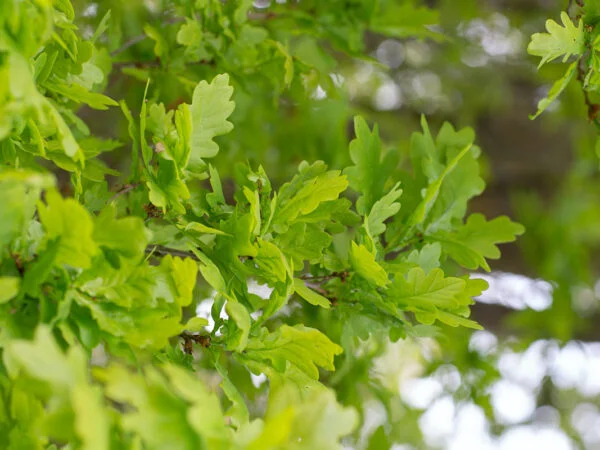Understanding the Life Cycle of Oak Trees
Oak trees are one of the most iconic and enduring tree species, with a rich history and diverse range of characteristics. From the mighty English oak to the sturdy white oak, these trees have been a cornerstone of ecosystems and human societies for centuries. But have you ever wondered how long it takes for oak trees to grow? The answer lies in understanding the life cycle of oak trees, which is a complex and fascinating process.
The life cycle of an oak tree can be broadly divided into several stages, from seedling to maturity. The journey begins with the germination of an acorn, which can take anywhere from a few weeks to several months. Once the seedling emerges, it enters a period of rapid growth, during which it develops its root system and begins to produce leaves. This stage is critical, as it lays the foundation for the tree’s future growth and development.
As the seedling grows, it enters the sapling stage, during which it begins to produce branches and develop its canopy. This stage can last anywhere from a few years to several decades, depending on factors such as climate, soil quality, and sunlight. During this time, the tree is vulnerable to disease, pests, and environmental stressors, which can impact its growth and development.
Once the sapling reaches maturity, it enters the adult stage, during which it continues to grow and produce acorns. This stage can last for hundreds of years, with some oak trees living up to 600 years or more. Throughout its life cycle, the oak tree plays a critical role in supporting ecosystems and providing habitat for a diverse range of wildlife.
Understanding the life cycle of oak trees is essential for appreciating the complexity and beauty of these incredible trees. By recognizing the different stages of growth and development, we can better appreciate the importance of patience and proper care in nurturing these trees. Whether you’re a seasoned arborist or simply a nature enthusiast, the life cycle of oak trees is a fascinating topic that offers insights into the natural world and our place within it.
Factors Affecting Oak Tree Growth Rates
When it comes to understanding how long it takes for oak trees to grow, it’s essential to consider the various factors that influence their growth rates. Oak trees, like all living organisms, are affected by a combination of environmental and genetic factors that can either promote or hinder their growth.
Climate is one of the most significant environmental factors affecting oak tree growth rates. Oak trees thrive in temperate climates with mild winters and warm summers. However, extreme temperatures, drought, or excessive rainfall can impact their growth. For example, a prolonged drought can slow down oak tree growth, while a warm and wet summer can accelerate it.
Soil quality is another critical factor that affects oak tree growth rates. Oak trees prefer well-drained, fertile soils with a pH between 6.0 and 7.0. Poor soil quality, such as compacted or nutrient-deficient soil, can limit oak tree growth. On the other hand, rich, fertile soil can promote healthy growth and development.
Genetics also play a significant role in determining oak tree growth rates. Different oak tree species have varying growth rates, with some species growing faster than others. For example, the white oak tree (Quercus alba) is known to grow relatively slowly, while the red oak tree (Quercus rubra) can grow faster.
Light exposure is another essential factor that affects oak tree growth rates. Oak trees require adequate sunlight to undergo photosynthesis, which is necessary for growth and development. However, excessive shade can limit oak tree growth, while full sun can promote healthy growth.
Understanding these factors is crucial for appreciating the complexity of oak tree growth and development. By recognizing the interplay between environmental and genetic factors, you can better understand how long it takes for oak trees to grow and what you can do to promote healthy growth.
How to Plant and Care for Oak Trees
Planting and caring for oak trees requires attention to detail and a commitment to providing the right conditions for growth. By following these tips and best practices, you can help your oak tree thrive and reach its full potential.
Soil preparation is essential for oak tree growth. Before planting, test the pH level of your soil and amend it if necessary. Oak trees prefer a slightly acidic to neutral soil pH, ranging from 6.0 to 7.0. Add organic matter such as compost or well-rotted manure to improve soil fertility and drainage.
When planting an oak tree, choose a location with full sun to partial shade and well-drained soil. Dig a hole that is twice as wide and just as deep as the tree’s root ball. Gently remove the tree from its container and place it in the hole, making sure the root flare (where the trunk flares out at the base of the tree) is level with the soil surface. Backfill the hole with soil, tamping it down gently as you go to prevent air pockets.
Watering is critical for oak tree growth, especially during the first year after planting. Water your oak tree regularly, providing about 1 inch of water per week. Avoid overwatering, which can lead to root rot and other problems.
Pruning is an essential part of oak tree care. Prune your oak tree annually to maintain its shape, promote healthy growth, and remove any dead or diseased branches. Prune in the dormant season (winter or early spring) to minimize the risk of disease and pests.
Pest management is also crucial for oak tree health. Keep an eye out for common pests such as aphids, scales, and borers, and use organic or chemical controls as needed. Regularly inspect your tree for signs of disease such as cankers, leaf spots, or powdery mildew, and take action promptly if you notice any problems.
By following these tips and best practices, you can help your oak tree grow strong and healthy, and enjoy its many benefits for years to come. Remember, patience and proper care are key to understanding how long it takes for oak trees to grow and thrive.
The Growth Stages of Oak Trees: From Seedling to Maturity
Oak trees undergo several distinct growth stages, from seedling to maturity. Understanding these stages is essential for appreciating the complexity of oak tree growth and development.
The seedling stage is the first stage of oak tree growth, lasting from 1-3 years. During this stage, the seedling develops its root system and begins to produce leaves. The seedling is vulnerable to disease, pests, and environmental stressors, and requires careful care and attention.
As the seedling grows, it enters the sapling stage, which can last from 3-10 years. During this stage, the sapling develops its branch structure and begins to produce a canopy. The sapling is still vulnerable to disease and pests, but is more resilient than the seedling.
The mature stage is the final stage of oak tree growth, lasting from 10-100 years or more. During this stage, the tree reaches its full height and spread, and produces acorns. The mature tree is more resistant to disease and pests, but still requires regular care and maintenance.
Understanding the growth stages of oak trees is essential for appreciating the complexity of oak tree growth and development. By recognizing the different stages of growth, you can better understand how long it takes for oak trees to grow and what you can do to promote healthy growth.
It’s worth noting that the growth stages of oak trees can vary depending on factors such as climate, soil quality, and genetics. However, by understanding the general growth stages of oak trees, you can gain a deeper appreciation for the complexity and beauty of these magnificent trees.
What to Expect: Oak Tree Growth Rates and Timelines
Understanding the growth rates and timelines of oak trees is essential for appreciating the complexity of their development. Oak trees are known for their slow and steady growth, but the exact rate of growth can vary depending on factors such as climate, soil quality, and genetics.
On average, oak trees can grow between 1-3 feet per year, with some species growing faster than others. For example, the white oak tree (Quercus alba) is known to grow relatively slowly, while the red oak tree (Quercus rubra) can grow faster.
Here is a general outline of what to expect in terms of oak tree growth rates and timelines:
Year 1-5: Seedling stage, during which the tree develops its root system and begins to produce leaves.
Year 5-10: Sapling stage, during which the tree develops its branch structure and begins to produce a canopy.
Year 10-20: Young tree stage, during which the tree continues to grow and develop its root system.
Year 20-50: Maturation stage, during which the tree reaches its full height and spread.
Year 50+: Maturity stage, during which the tree continues to produce acorns and provide shade and habitat for wildlife.
It’s worth noting that these are general guidelines, and the exact growth rate and timeline of an oak tree can vary depending on factors such as climate, soil quality, and genetics. However, by understanding the general growth rates and timelines of oak trees, you can gain a deeper appreciation for the complexity and beauty of these magnificent trees.
When considering how long it takes for oak trees to grow, it’s essential to remember that patience and proper care are key. With the right conditions and care, oak trees can thrive and provide benefits for generations to come.
Common Challenges and Solutions for Oak Tree Growth
Oak trees are generally hardy and resilient, but they can still face challenges that impact their growth and health. Understanding these challenges and knowing how to overcome them is essential for promoting healthy growth and maximizing the potential of your oak tree.
One common challenge that oak trees face is disease. Oak trees are susceptible to a range of diseases, including oak wilt, root rot, and leaf spot. To prevent disease, it’s essential to maintain good tree hygiene, including removing any dead or diseased branches and avoiding wounds to the tree.
Pests are another common challenge that oak trees face. Oak trees can be susceptible to pests such as aphids, scales, and borers. To control pests, use organic or chemical controls as needed, and maintain good tree hygiene.
Environmental stressors, such as drought, extreme temperatures, and pollution, can also impact oak tree growth. To mitigate the effects of environmental stressors, provide your oak tree with adequate water, nutrients, and protection from extreme temperatures.
Soil compaction is another common challenge that oak trees face. Soil compaction can prevent roots from growing and can impact tree health. To prevent soil compaction, avoid heavy foot traffic or machinery around the tree, and use mulch or other soil amendments to improve soil structure.
By understanding these common challenges and knowing how to overcome them, you can promote healthy growth and maximize the potential of your oak tree. Remember, patience and proper care are key to understanding how long it takes for oak trees to grow and thrive.
Some solutions to these challenges include:
Regular pruning to maintain tree health and promote growth
Using organic or chemical controls to manage pests and diseases
Providing adequate water, nutrients, and protection from extreme temperatures
Avoiding soil compaction and using mulch or other soil amendments to improve soil structure
By following these tips and being aware of the common challenges that oak trees face, you can help your oak tree grow strong and healthy, and enjoy its many benefits for years to come.
Maximizing Oak Tree Growth: Tips and Strategies
To maximize oak tree growth, it’s essential to provide the right conditions and care. Here are some expert tips and strategies for promoting healthy growth, increasing yields, and enhancing overall tree health.
1. Provide adequate water and nutrients: Oak trees need consistent moisture, especially during the first year after planting. Water your oak tree regularly, and fertilize annually with a balanced fertilizer.
2. Prune regularly: Pruning is essential for maintaining tree health and promoting growth. Prune your oak tree annually to remove dead or diseased branches, and to maintain a strong, central leader.
3. Mulch around the base: Mulching around the base of your oak tree can help retain moisture, suppress weeds, and regulate soil temperature. Use a 2-3 inch layer of organic mulch, such as wood chips or bark.
4. Protect from pests and diseases: Oak trees can be susceptible to pests and diseases, such as aphids, scales, and oak wilt. Use organic or chemical controls as needed, and maintain good tree hygiene to prevent the spread of disease.
5. Provide support: Young oak trees may need support to prevent wind damage or breakage. Use stakes or guy wires to provide support, and remove them once the tree is established.
6. Monitor for environmental stressors: Oak trees can be impacted by environmental stressors, such as drought, extreme temperatures, and pollution. Monitor your tree regularly, and take action to mitigate the effects of environmental stressors.
By following these tips and strategies, you can maximize oak tree growth and promote healthy development. Remember, patience and proper care are key to understanding how long it takes for oak trees to grow and thrive.
Some additional tips for maximizing oak tree growth include:
Using compost or other soil amendments to improve soil fertility and structure
Providing adequate sunlight and air circulation
Avoiding over-pruning or over-fertilizing
Monitoring for signs of stress or disease
By incorporating these tips and strategies into your oak tree care routine, you can promote healthy growth and maximize the potential of your oak tree.
Conclusion: The Rewards of Patience and Proper Care
Oak trees are a true marvel of nature, with their majestic canopies and sturdy trunks. But to truly appreciate these trees, it’s essential to understand the growth process and the factors that influence it. By understanding how long it takes for oak trees to grow, you can better appreciate the importance of patience and proper care.
Throughout this article, we’ve explored the various stages of oak tree growth, from seedling to maturity. We’ve discussed the factors that affect growth rates, including climate, soil quality, sunlight, and genetics. We’ve also provided tips and strategies for maximizing oak tree growth, including techniques for promoting healthy growth, increasing yields, and enhancing overall tree health.
By following these tips and strategies, you can help your oak tree grow strong and healthy, and enjoy its many benefits for years to come. Remember, patience and proper care are key to understanding how long it takes for oak trees to grow and thrive.
In conclusion, oak trees are a true treasure, and with the right care and attention, they can provide countless benefits for generations to come. By understanding the growth process and the factors that influence it, you can better appreciate the importance of patience and proper care. So next time you see an oak tree, remember the journey it took to get there, and the rewards that come with patience and proper care.







